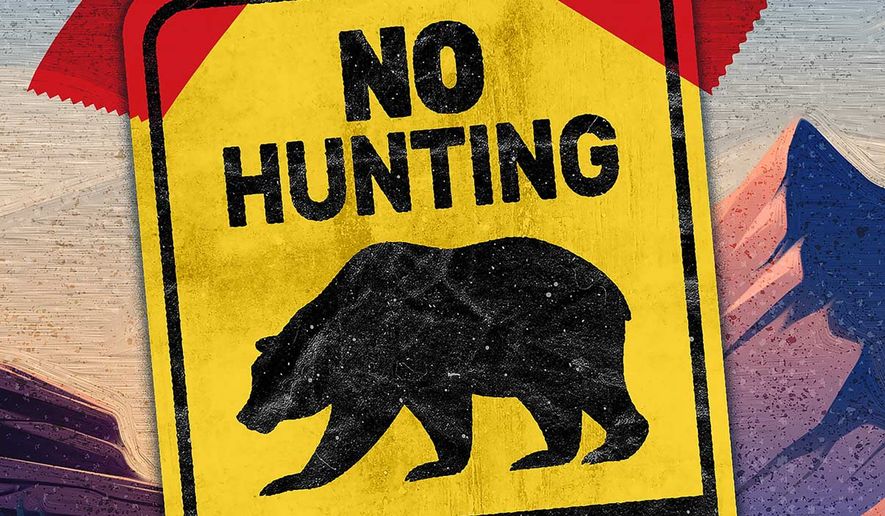OPINION:
Despite several decades of rigorous research and crystal-clear data confirming their remarkable recovery, grizzly bears in the lower 48 states remain on the endangered species list.
This is thanks to the unscientific decisions of high-ranking government officials and activist judges reacting to the demands of animal rights activists who oppose hunting. This decadeslong saga has continued despite the fact that the U.S. Fish and Wildlife Service, the federal agency charged with oversight of the list, and the three affected state fish and wildlife agencies (in Idaho, Montana and Wyoming) have repeatedly called for delisting based on scientific data.
Because opponents of delisting have politicized the intent of the Endangered Species Act and ignored scientific data, governors have stepped up and called for action. Multiple bills have been introduced in Congress to return management authority over grizzly bears to the states.
These bears are one of the most intensively studied species in the U.S. In the lower 48 states, there are two main grizzly populations: the Greater Yellowstone Ecosystem, or GYE, and the Northern Continental Divide, or NCD. By all objective scientific measures, grizzly populations in the GYE have fully recovered from “threatened” status on the list since 2003. Bears in the NCD also met and exceeded all recovery goals several years ago.
Research confirms that in the GYE in Wyoming, for example, an estimated 1,069 grizzlies roamed the demographic monitoring area in 2021. This area is defined by the Fish and Wildlife Service as suitable habitat for the long-term viability of the species. Yet the bears are routinely found up to 65 miles outside this range, which in turn bolsters the total number of bears in the ecosystem. Even more compelling, this total number far exceeds (by approximately double) all federal and state scientifically established requirements for a recovered and viable population.
Before joining Gun Owners of America, I spent three decades researching and managing game species at the state level — 10 of those years leading a state’s black bear management program. Given my experience managing big game populations and having dealt with the interface between state and federal regulations and law, it’s obvious to me that the grizzly bear debate boils down to one thing: The opponents of delisting are weaponizing the Endangered Species Act to ensure that these bears are permanently protected from hunting, something the law was never meant to do.
Delisting opponents and animal rights activists make unsubstantiated claims that states cannot manage grizzlies properly. They make excuses or ignore data that concretely confirm that grizzly populations have met and exceeded all state and federal recovery goals required under the law — for decades in some instances.
Most concerning, these delisting opponents ignore the fact that lethal grizzly control must now be implemented by taxpayer-funded government employees to maintain a balanced population and ensure public safety. In 2021 in Wyoming alone, 29 grizzlies were lethally removed by government officials. Most of these removals occurred outside the demographic monitoring area, again demonstrating that grizzly populations are thriving and expanding.
If delisted, the need for taxpayer-funded lethal removal would greatly diminish, as hunters would serve as the primary means of population control under state management plans, just as they do right now in Alaska and parts of Canada. Hunters, who actually serve as the largest contributors to wildlife conservation every year in the United States, would pay handsomely for the once-in-a-lifetime opportunity to hunt grizzlies, generating significant revenue for the affected states in the process.
Wyoming, Montana and Idaho have long-term management plans in place to ensure grizzlies do not need to be relisted, and they’ve already proved that their management practices work. Look at how they’ve managed wolves since they were delisted a decade ago, or their successful management of other big game species such as bighorn sheep, moose, mountain lions and black bears. All of those populations have thrived, with hunters playing a major role in those efforts.
Since grizzly bears met and greatly exceeded all federal and state population recovery goals 20 years ago, continued management under the Endangered Species Act wastes taxpayer money, negatively impacts the economies of the affected states, cheapens the intent and purpose of the law, and robs the nation’s hunters of an opportunity to play a major role in grizzly bear conservation.
We should be celebrating the grizzly recovery story and not trying to use the Endangered Species Act to promote an anti-hunting political agenda.
• Mark Jones is a certified wildlife biologist and the national director of hunter outreach for Gun Owners of America. He resides in Wyoming.




Please read our comment policy before commenting.